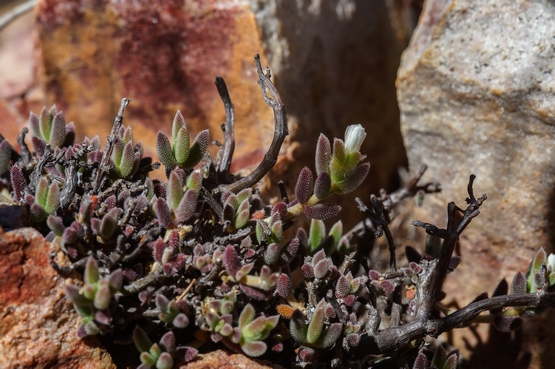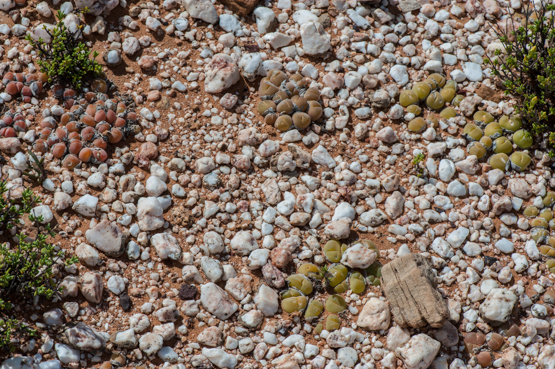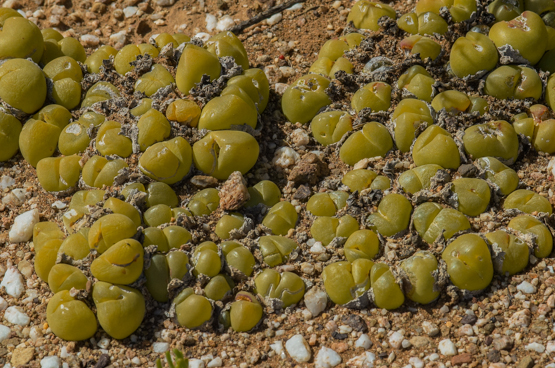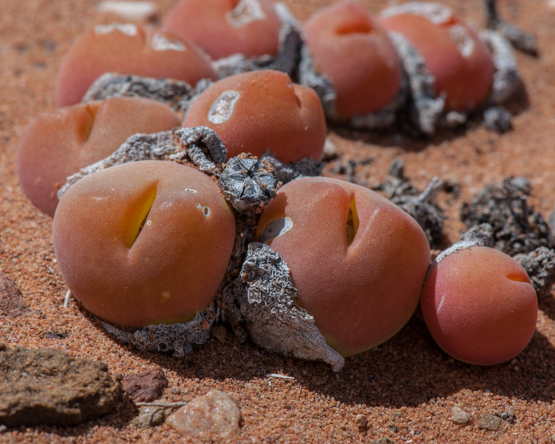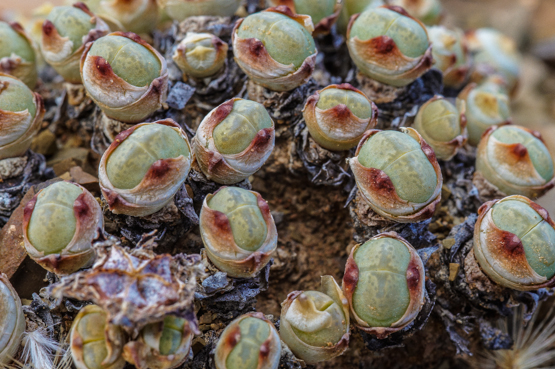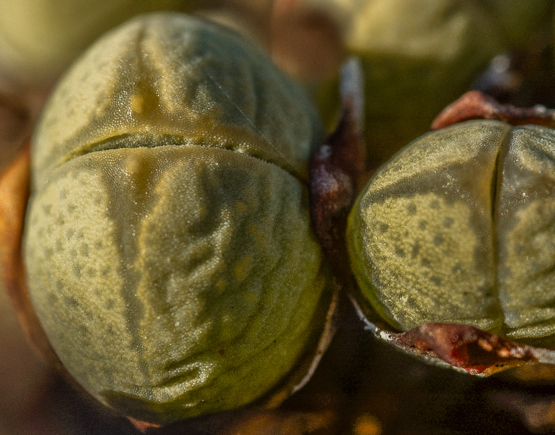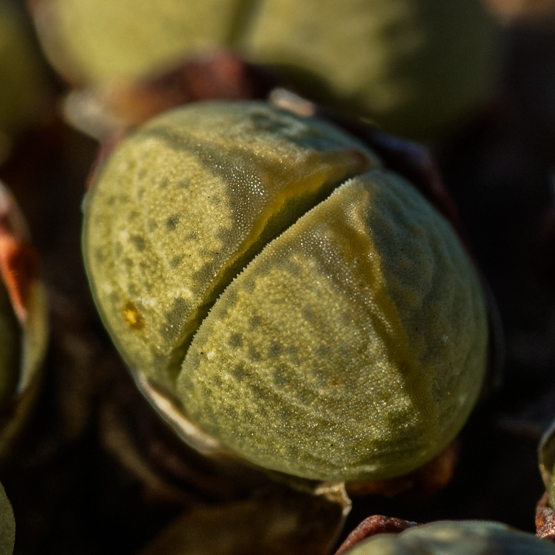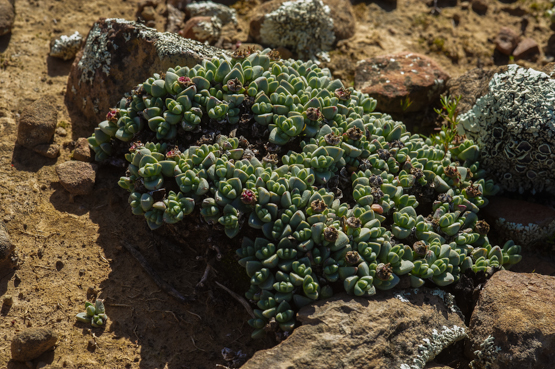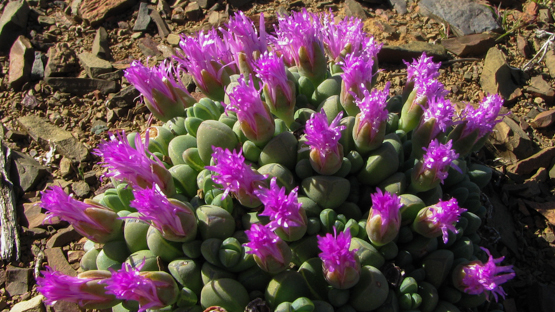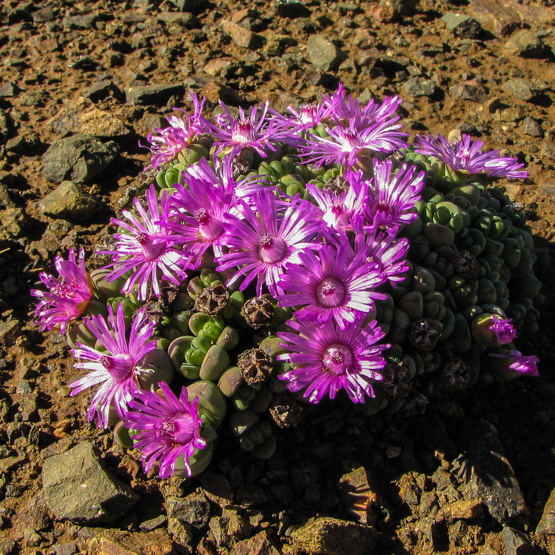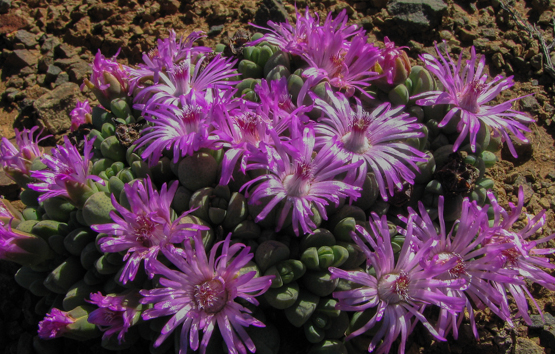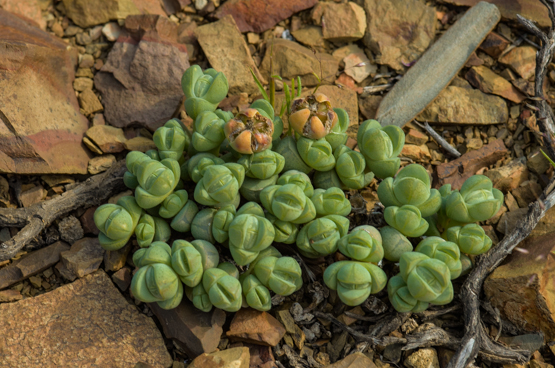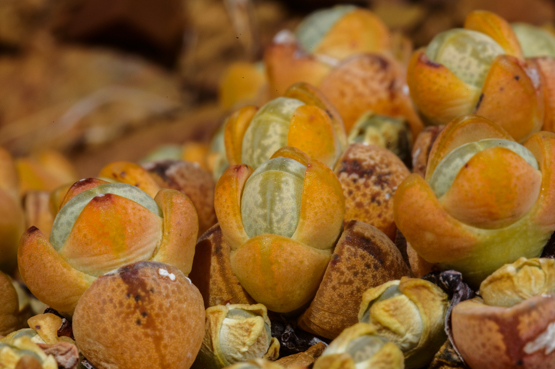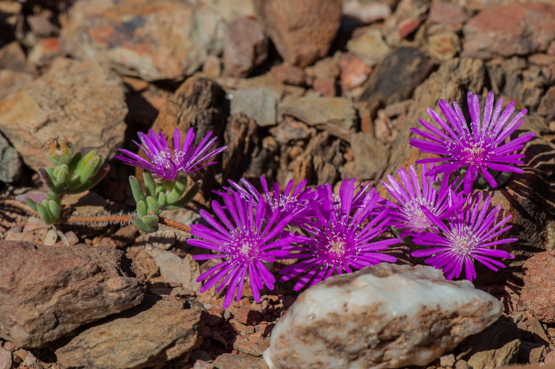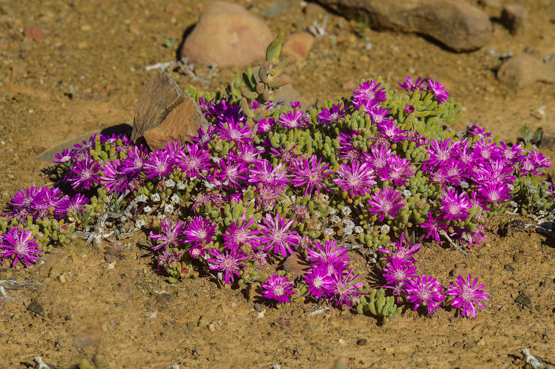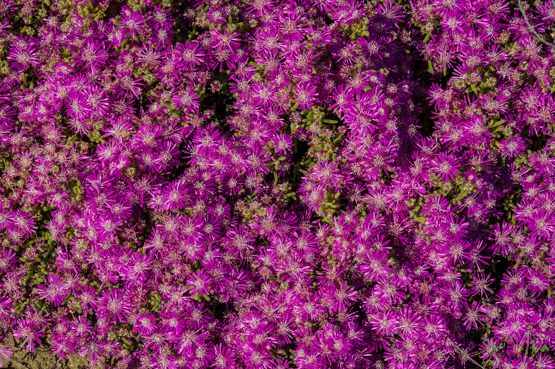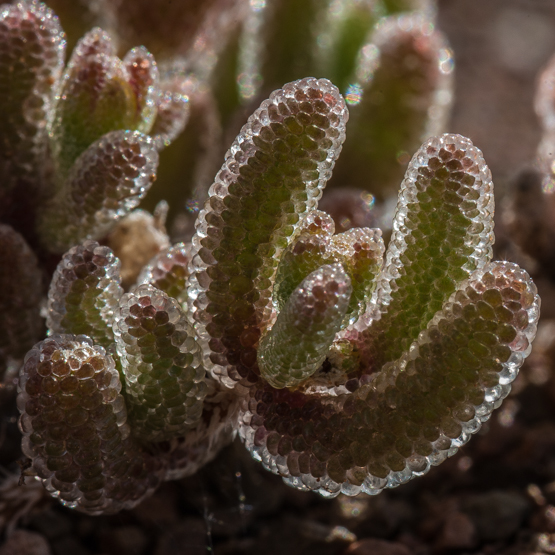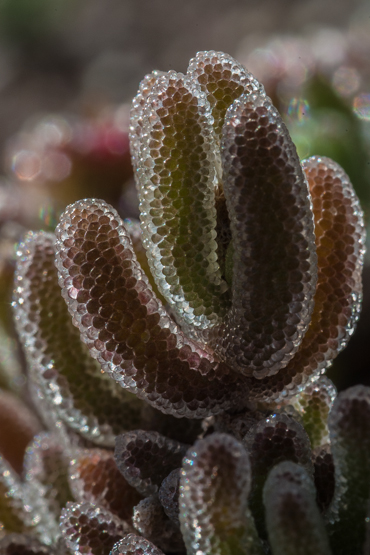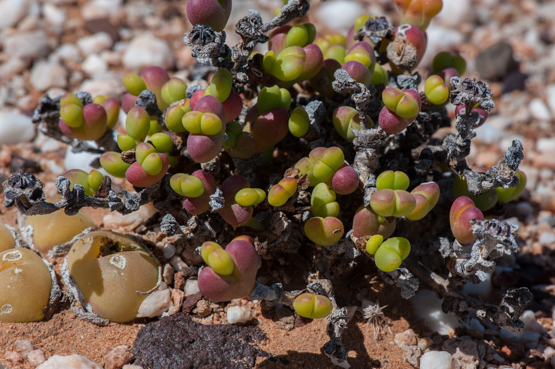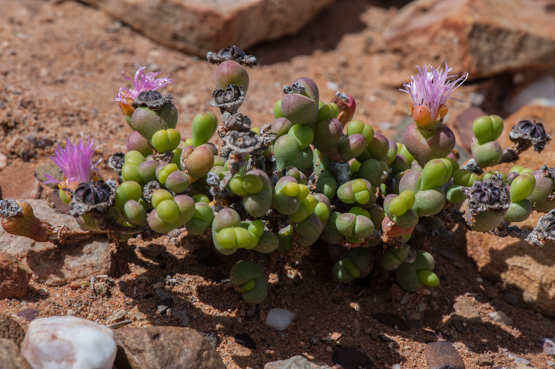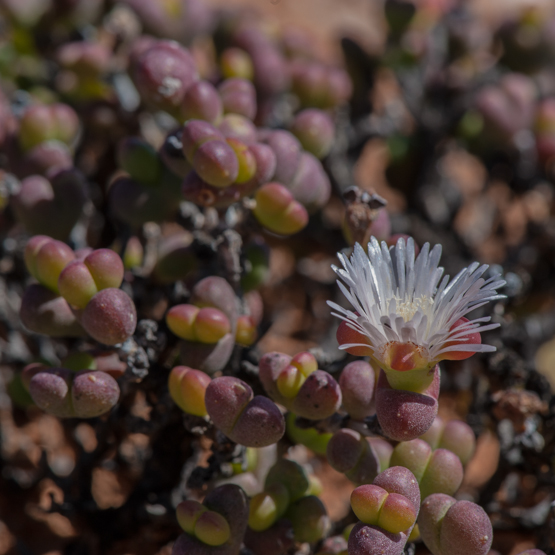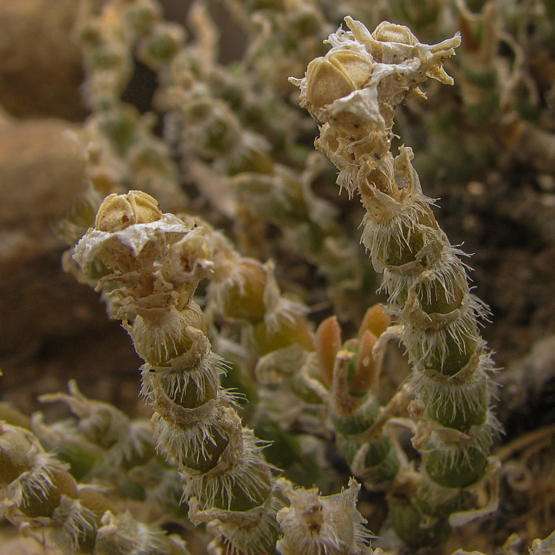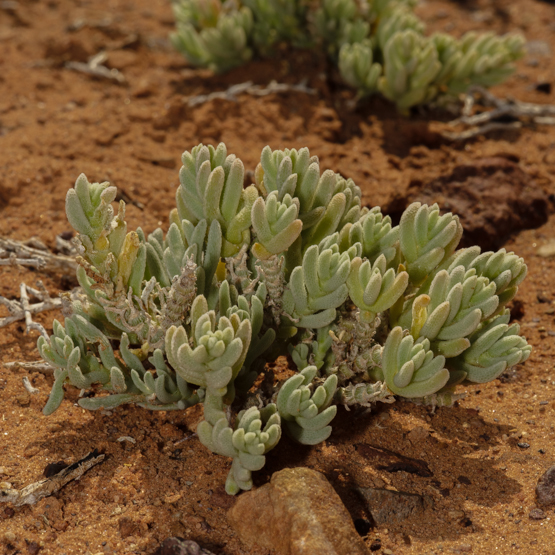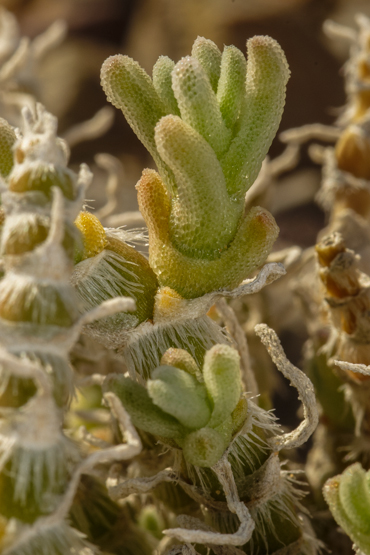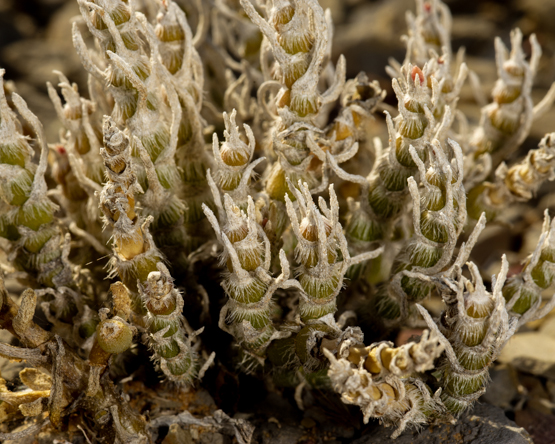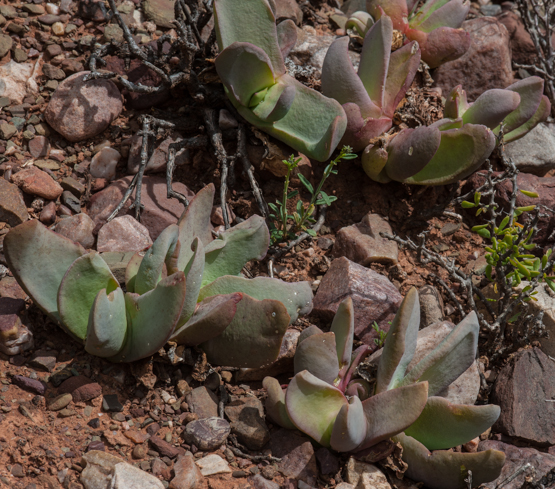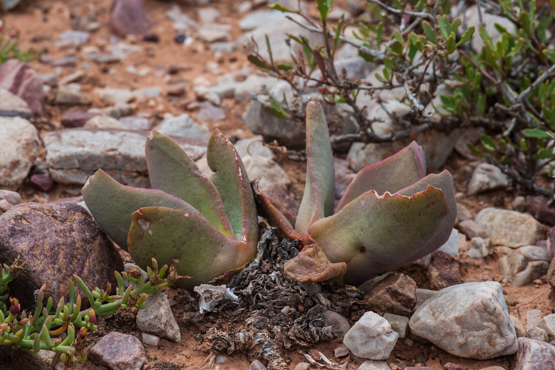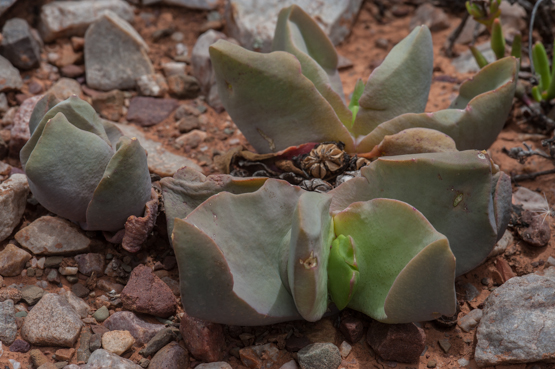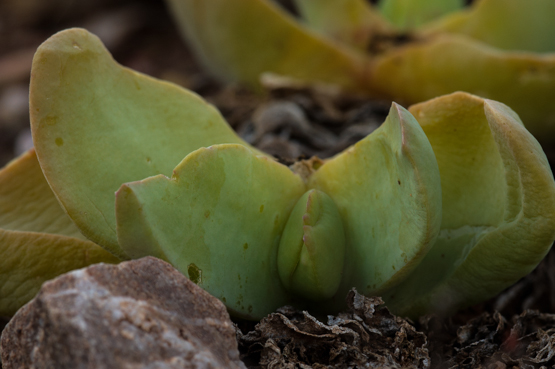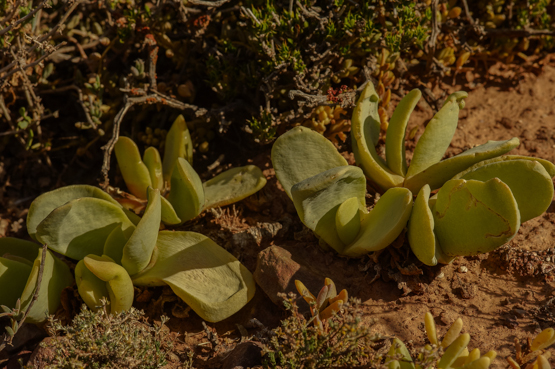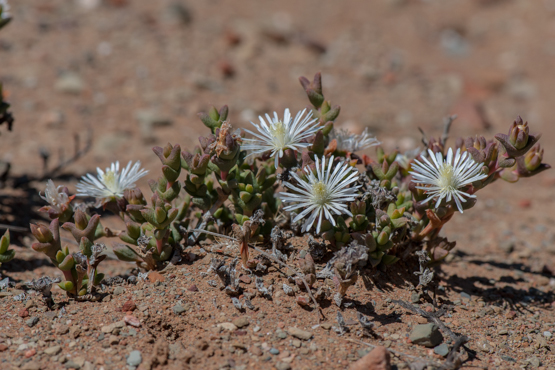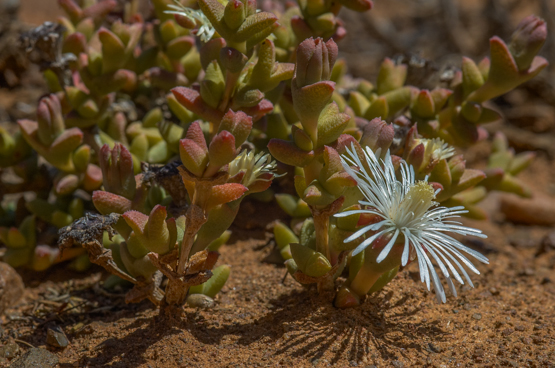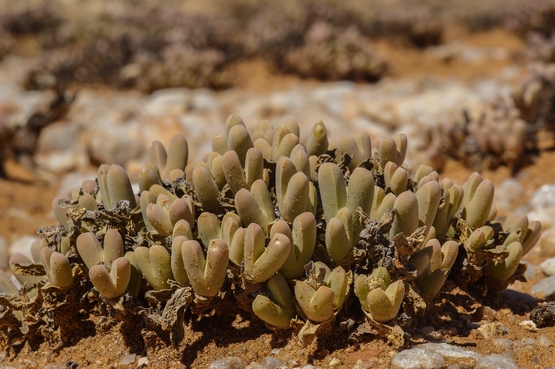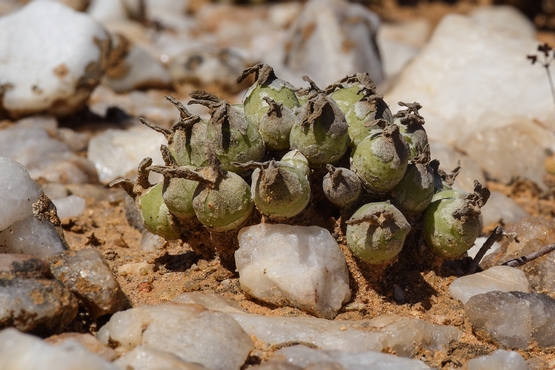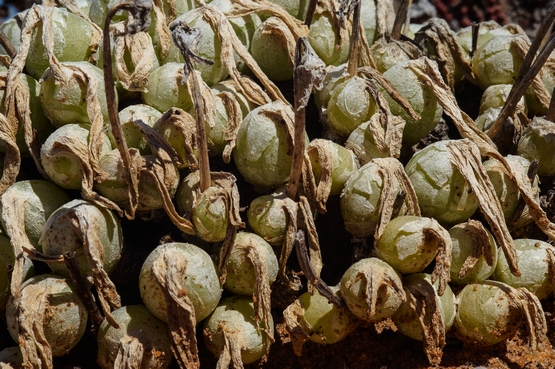We often refer to scientific names in biology as Latin names, because most of them are either derived from that language or are latinised from other languages. If that were the case here too, the second part of the name should be attonsa. The name Trichodiadema is however derived from Greek (thrix = hair and diadema = crown) and because diadema is a neuter word, the second part of the name has to be attonsum.
As the name implies, most species of Trichodiadema have a crown of hairs at the top of the leaves. The word attonsum means shaved or pruned and is quite appropriate, because this species lacks the diadema that is so characteristic for most other members of the genus.
According to the literature the species occurs on rocky outcrops, as shown in the first two pictures, taken on the Rooiberg near Calitzdorp (23 Oct. 2009).
The third picture was taken 2 days ago, near the southwestern border of Anysberg Nature Reserve. Although the plant clearly does not grow on an outcrop of any kind, there are quartz pebbles present.

